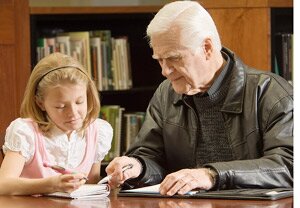With the jobless rate still hovering around 9 percent, larger numbers of laid-off business executives are turning to volunteering as a way to make a difference to society—and to retool their skills and perhaps change career paths. This is a godsend for the overburdened charities that need this help now more than ever. Nonprofit managers need to take full advantage of this opportunity, making the most of the legions of skilled volunteers to help strengthen the capacity and financial health of their organizations.
 Fortunately, there is now a big push to help communities across the country tap the incredible skills so many volunteers have to offer. In 2008 the Corporation for National Service kicked off “A Billion + Change” a national campaign to generate $2-billion worth of skilled expertise to help nonprofit groups meet community needs by 2013.
Fortunately, there is now a big push to help communities across the country tap the incredible skills so many volunteers have to offer. In 2008 the Corporation for National Service kicked off “A Billion + Change” a national campaign to generate $2-billion worth of skilled expertise to help nonprofit groups meet community needs by 2013.
You might imagine that many professionals are not able to volunteer because they have full-time jobs. As long as an organization uses its creativity and resources to recruit and manage volunteers well, it is not a major barrier.
Not all charities use skilled volunteers well. A 2006 study conducted by Deloitte LLP and the Points of Light Foundation reports that neither businesses nor nonprofit groups have been able to create effective programs to recruit and manage skilled volunteers.
The benefits of making the most of skilled volunteers are clearly profound, but recruiting, retaining, and managing all of them can still be a headache. So how can a charity be sure it is getting the most out of the amazing resources and opportunities available today without going crazy or offending the volunteers or the employees?
Define each individual role that needs filling. Don’t just aimlessly recruit as many people as possible. What skills are the organization’s staff members lacking? Which projects are not started because the organization doesn’t have the employees to do them? Advertise specialized opportunities on Web sites that list nonprofit jobs and volunteer needs, listing each position’s responsibilities and requirements.
Don’t waste time on potential volunteers who don’t seem like a good fit. Be upfront about what the organization wants the volunteer to do. Ask what the volunteer is looking for. If, for example, the charity’s needs call for an independent worker who can sit at the computer and send out e-mail blasts all day, don’t offer the work to someone who is looking to volunteer as a way to be active and socialize.
Keep volunteers motivated. Since money is obviously not the incentive here, volunteers will do their best work when they feel inspired by the end result. Before they even get started, show them firsthand what the organization can accomplish. Incentives are also important. Can you offer experience, recommendations, professional contacts, and a fun time?
 Be flexible and show respect. It would be great if people with needed skills were willing to devote themselves to one charity, or solely to volunteerism, but they probably need to spend the majority of their time working on paid projects or looking for work. Give the volunteers specific tasks and short-term projects that require only a few hours per day or a few months of their time and make sure their important contribution is recognized. The obvious way to do this would be individual praise, but write-ups on the charity’s Web site or Facebook page or in an electronic newsletter to supporters can show appreciation. Let volunteers see how their work helps move the organization forward. Those “rewards” aid in continued motivation and retention.
Be flexible and show respect. It would be great if people with needed skills were willing to devote themselves to one charity, or solely to volunteerism, but they probably need to spend the majority of their time working on paid projects or looking for work. Give the volunteers specific tasks and short-term projects that require only a few hours per day or a few months of their time and make sure their important contribution is recognized. The obvious way to do this would be individual praise, but write-ups on the charity’s Web site or Facebook page or in an electronic newsletter to supporters can show appreciation. Let volunteers see how their work helps move the organization forward. Those “rewards” aid in continued motivation and retention.
Above all, don’t undermine the morale of staff members and consultants. Make sure you use volunteers in a way that complements the work of the people who are paid to keep the charity running. Make it clear that volunteering is support for the essential work of your organization. Your sponsors want to know that their donations are being put to good use, after all.
Do you manage skilled volunteers? What are some effective tactics you’ve put to use? Let us know in the comments below!
Related Articles
The Key to Unlocking the Benefits of Corporate Volunteering
Six Tips for Writing Volunteer Position Descriptions
Eight Benefits of Volunteerism





 Be highly aware of the images used in materials targeted towards boomers. According to the Boomer Project national survey, boomers see themselves as being at least 12 years younger than their chronological age. Images of individuals they perceive as “elderly” may be unappealing to boomers – they want to see people who reflect their own self-image.
Be highly aware of the images used in materials targeted towards boomers. According to the Boomer Project national survey, boomers see themselves as being at least 12 years younger than their chronological age. Images of individuals they perceive as “elderly” may be unappealing to boomers – they want to see people who reflect their own self-image.
 Establishing goals at the onset of your group project, allows for you to measure the outcomes of your project. Consider these questions: Is there a current event that has emotionally affected you or might have emotionally affected others around you? What change would you like to see in your community?
Establishing goals at the onset of your group project, allows for you to measure the outcomes of your project. Consider these questions: Is there a current event that has emotionally affected you or might have emotionally affected others around you? What change would you like to see in your community? Find volunteers or contact other local nonprofits that can help provide volunteers. If your project is important to the community, you will find many people eager to be involved. Place flyers at your local post office, park, grocery store, school, community bulletin boards. Volunteer recruitment will also help make people aware of your group project. Social media outlets will also help with volunteer recruitment. Websites such as , , , and a personal blog can easily reach a wide range of people.
Find volunteers or contact other local nonprofits that can help provide volunteers. If your project is important to the community, you will find many people eager to be involved. Place flyers at your local post office, park, grocery store, school, community bulletin boards. Volunteer recruitment will also help make people aware of your group project. Social media outlets will also help with volunteer recruitment. Websites such as , , , and a personal blog can easily reach a wide range of people. Remember to thank your volunteers! Thank your volunteers so that they can feel appreciated and want to volunteer for future projects. Whether it’s a hand-written note filled with a simple message and encouraging words or talking to your volunteers individually-thank them! If you’re not quite sure how, we have
Remember to thank your volunteers! Thank your volunteers so that they can feel appreciated and want to volunteer for future projects. Whether it’s a hand-written note filled with a simple message and encouraging words or talking to your volunteers individually-thank them! If you’re not quite sure how, we have  Call an easily accessible town meeting of community members and project team members. Brainstorm challenges facing the community and select one as the top priority.
Call an easily accessible town meeting of community members and project team members. Brainstorm challenges facing the community and select one as the top priority.
 Contact the government or public policy program at a local university or college. Ask students to survey the local residents about their concerns.
Contact the government or public policy program at a local university or college. Ask students to survey the local residents about their concerns.

 Do you know how to let volunteers know that you’re ready for their help? Do you know what kind of help you need? Do you know how to let volunteers know the kind of help you’re looking for?
Do you know how to let volunteers know that you’re ready for their help? Do you know what kind of help you need? Do you know how to let volunteers know the kind of help you’re looking for?

 Be clear about what you want people to do. The volunteer position description serves as an introduction to your organization and to what you’re asking volunteers to do. It’s important to have a clear, easy to read description of what volunteers will be doing with your organization.
Be clear about what you want people to do. The volunteer position description serves as an introduction to your organization and to what you’re asking volunteers to do. It’s important to have a clear, easy to read description of what volunteers will be doing with your organization. The key to recruiting and retaining boomer volunteers is for nonprofits and volunteer centers to develop an ongoing dialogue with boomers and tailoring service opportunities to meet their needs and desires around service. Here are some tips for focusing on boom recruitment and retention:
The key to recruiting and retaining boomer volunteers is for nonprofits and volunteer centers to develop an ongoing dialogue with boomers and tailoring service opportunities to meet their needs and desires around service. Here are some tips for focusing on boom recruitment and retention:
